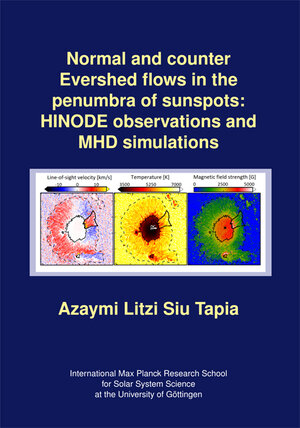
×
![Buchcover ISBN 9783944072593]()
Normal and counter Evershed flows in the penumbra of sunspots: HINODE observations and MHD simulations
von Azaymi Litzi Siu TapiaSunspot penumbrae harbor a distinctive gas outflow in the photosphere, known as the Evershed flow, whose origin has been an open question since its discovery in 1909. More recently, the existence of counter Evershed flows (inflows) in well-developed penumbrae was detected. Little is known about their nature, characteristics and their relation with the filamentary structure of penumbrae due to their rare occurrence. This thesis reports a detailed study of the most prominent counter-Evershed flow (CEF) so far recorded. Similarities and differences in the flow characteristics and the fine structure of the large penumbral sector harboring the CEF compared with the normal Evershed flow (NEF) were discovered. However, the observations alone could not distinguish between different possible mechanisms driving NEF and CEF. An in-depth analysis of a high-resolution magnetohydrodynamic simulation of a sunspot whose penumbra harbors localized CEFs revealed that different forces are the main drivers for the NEF and the CEF, with the NEF being convectively driven while the CEF is mainly a siphon flow. Finally, the reliability of inversion results returning very large penumbral field strengths –larger than 7 kG– in supersonic downflow regions, which are associated with the CEF sinks at the inner penumbral boundary, is investigated and discussed on the basis of simple field strength estimation methods and different inversion techniques. The observation of such unusually large fields, if real, would correspond to the strongest magnetic fields ever directly measured on the Sun.


